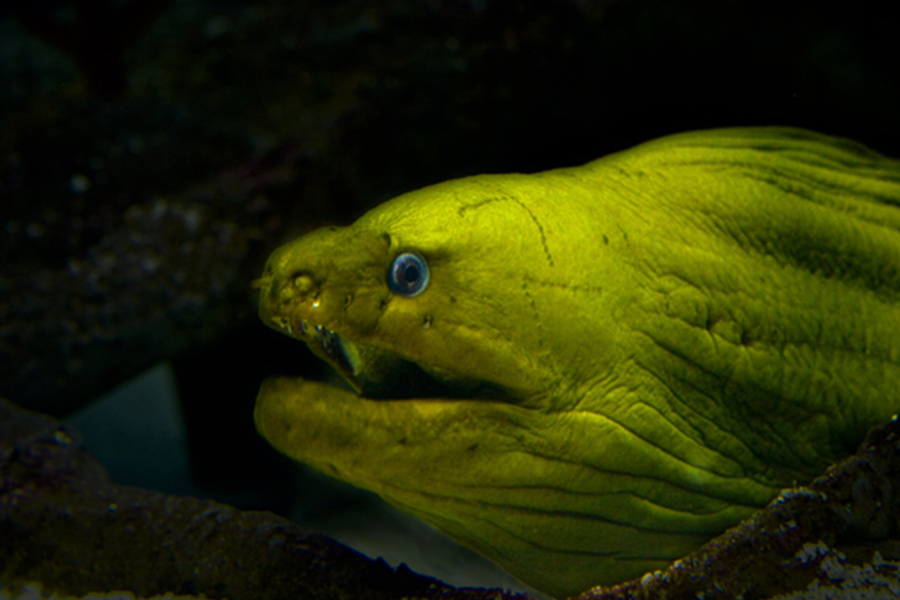
Habitat
In cooler waters, north of the Caribbean, green moray eels and are commonly found around seawalls and rock pilings. In warm tropical waters, they can be found in many different habitats including coral reefs, mangroves, tidal creeks, and even in areas with sandy or muddy bottoms.
Aquarium Location
Ocean
Fun Facts
- Usually seen opening and closing its mouth in a threatening way, but the eel breathes by opening and closing its mouth to force water over the gills.
- Has a very pronounced sense of smell, which it uses to locate prey in the dark gloomy areas of rocks and coral reefs.
- When attacking an octopus, the moray ties itself in a knot to avoid the grip of the octopus’ arms.
- Cleaner shrimp and gobies help the moray eel by eating parasites, bacteria, and dead skin off the eel’s body, even going inside the eel’s mouth to clean
- Are the only fish that can swim forwards and backwards.
- Mainly active at night and tend to hide in crevices during the day.
Diet
Usually feeds on crustaceans, octopus and small fish.
Cool Adaptation
Green morays lack all fins (other than elongated dorsal fins) and swim too slow to pursue their prey freely in the water column or along the outside of the reef. Leaving the protection of the reef would also make these creatures susceptible to predation from larger, faster-swimming reef inhabitants like sharks. So instead of swimming freely, eels prefer to lay still in dark holes and cracks and simply wait for their prey to swim by. To get into these tight areas, green morays have adaptive mucus covering on their skin that makes them very slimy to the touch. This mucus also gives these eels their green appearance. With this slimy skin, eels can slip into the tightest cracks in reefs with ease without damaging their skin. Here they will lie and wait in darkness with their mouths gaping for unsuspecting prey. When a prey item does move past, the eel quickly snags it with sharp, hook-like, backwards-facing teeth. The backward orientation of the eel’s teeth allows a deep, strong bite as the fish tries to wiggle away.
Conservation Connection
Their snake-like bodies, sharp teeth, and bright green color make them both a popular and exciting animal to see in the wild and in captivity. These normally quiet fish have been known to bite when their territory (rock crevice or hole) is invaded, which can cause a nasty infection. Despite this danger, capturing eels has become popular for economic purposes. However, the capturing of green morays does not seem to have lessened their numbers in their native habitats. Green moray eels are considered common in their native range. Therefore there currently is no special concern/status for the conservation of this species.


